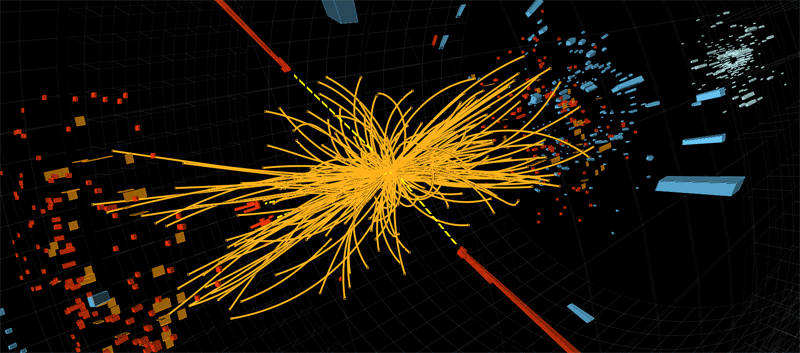Being the physics nerd I am, finding out that the announcement of the results from the Large Hadron Collider (LHC) at CERN in the search for the Higgs Boson was going to be made in my city (Melbourne) at the High Energy Physics conference on the 4th of July, had me acting like quite the fanboy.
I unfortunately didn’t get a chance to attend the conference but in the wonderful world that is the 21st Century, I was able to watch the conference via a web cast. I was kinda excited to see a lecturer who actually lectured one of my classes respond to CERN from the conference though. Surreal.
Those who are not so physics-obsessed might be asking “what on Earth is the Higgs boson!?” and that’s a pretty good question. The basic notion is that the Higgs boson is a particle that we postulate exists, and will qualify the currently accepted model for how the Universe is constructed. It is often called the “God particle” because it is, essentially, the most fundamental origins of all matter in the Universe. It’s one of the biggest quests in physics, and something Einstein himself was striving to discover.
The catch is that it would have only existed at energy levels that would have been around at the time of the Big Bang – levels that simply don’t exist naturally anymore. The LHC was designed to accelerate really tiny particles to such incredible speeds that such energies could be achieved as the particles collided.
Even with my (limited) knowledge of physics from an undergrad degree in the subject, most of the conference went straight over my head. You pretty much need a PhD to understand everything that went on.
From what I did manage to gather, it seems that no solid conclusions can be drawn, but we seem to be on the right track.
The bottom line of the announcement
(which was ushered in with the hall bursting into applause)
was that both detectors at the LHC
have observed a new boson
The CMS result found the new boson at
at 125.3 +/- 0.6 GeV at a 4.9 sigma significance
while the ATLAS detector found it at
~126.5 GeV at a 5.0 sigma significance
So what does that mean? It means that we’ve found a boson that is most likely to be where the Higgs boson should be, and the result is 99.9% genuine – the result is “significant” (and not just a coincidental fluke).
Of course, the speakers frequently qualified the announcement with the fact that there aren’t quite enough results yet (considering the LHC has only been gathering data for just over a year) to conclusively qualify the Standard Model. But for Higgs believers, these ‘preliminary’ findings indicate that the Higgs boson does exist, and we can now start doing “Higgs measurements” and learning more about this new particle and confirm its existence and properties. We are just at the beginning.
But what does the discovery really mean for the rest of the world? The truth is, we don’t know yet. The proof of the Higgs boson will allow physicists to confidently explore physics at levels that were previously uncertain – and who knows where these new branches of physics may lead? I’m sure when Einstein first discovered E = mc^2, it wouldn’t have been entirely clear where the practical application of that would be for the non-scientists of the time.
It was amazing watching the response to this incredible announcement, with the entire place full of excited people, standing and clapping and whooping. It would have been an electric atmosphere that would had been exhilarating to be a part of. This may just be one of the most historic moments in the progress of physics and I, for one, am so excited to be living in this momentous age.
Here’s a simulation from CERN of the collision. Even if you don’t quite get it, it’s pretty.
If you want to read more, the Quantum Diaries provides up-to-date information (and usually in easy-to-understand languge). You can also check out the CERN Twitter or the CERN site too.

